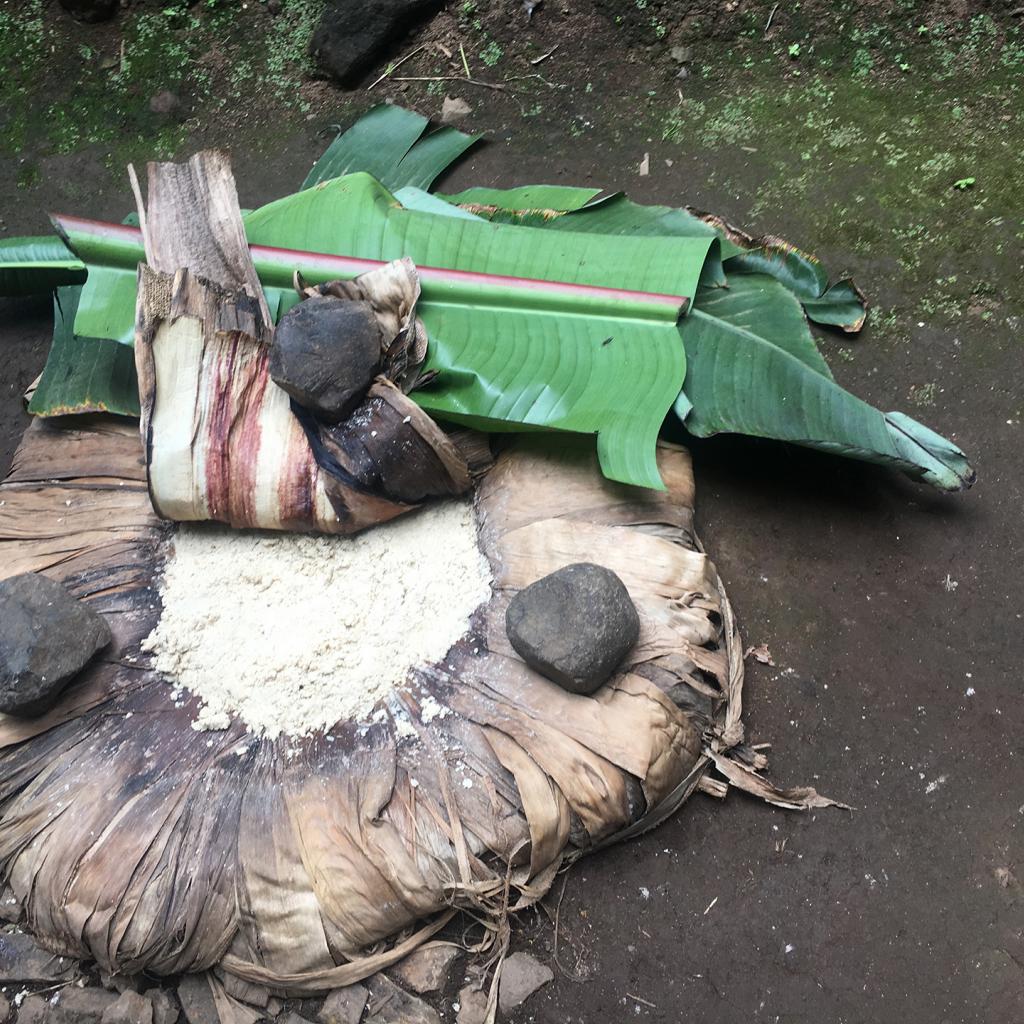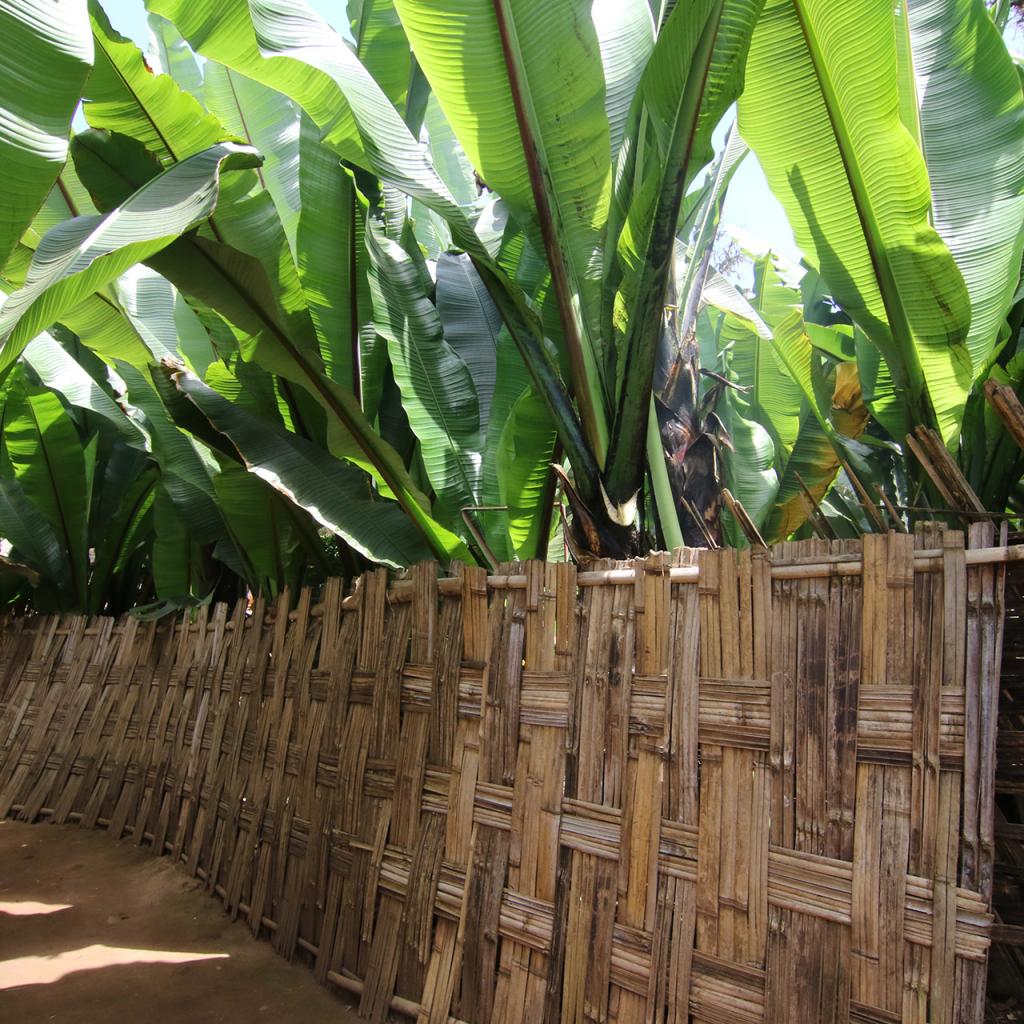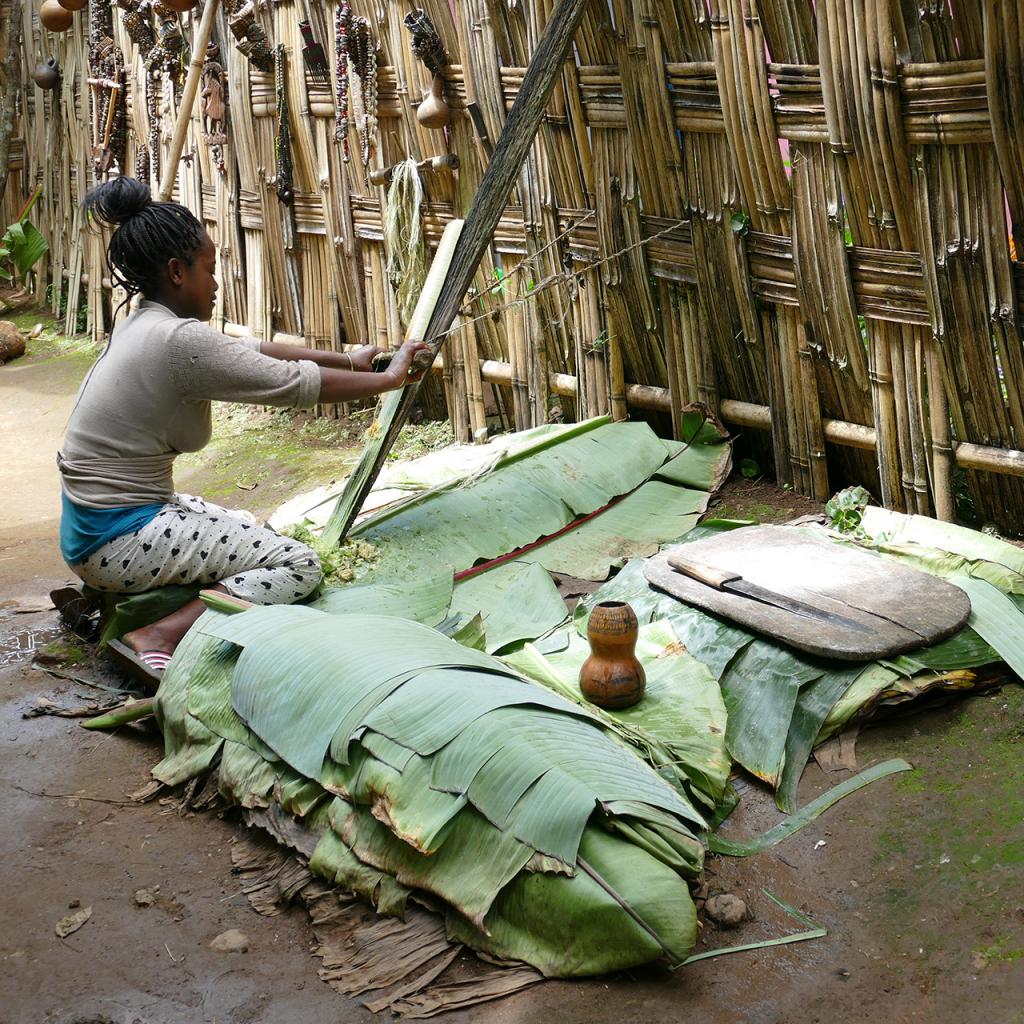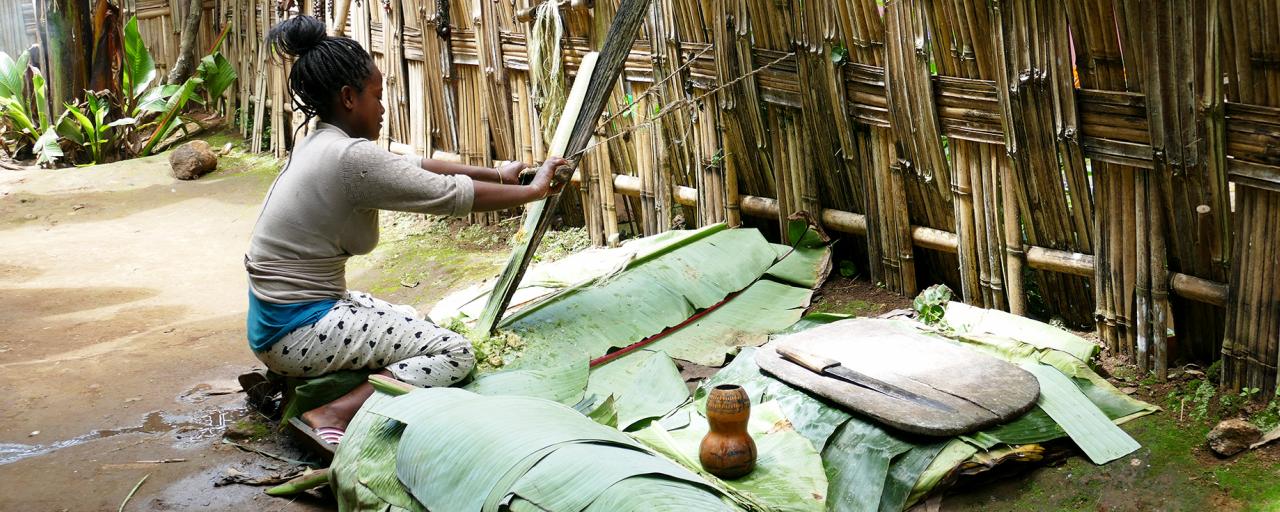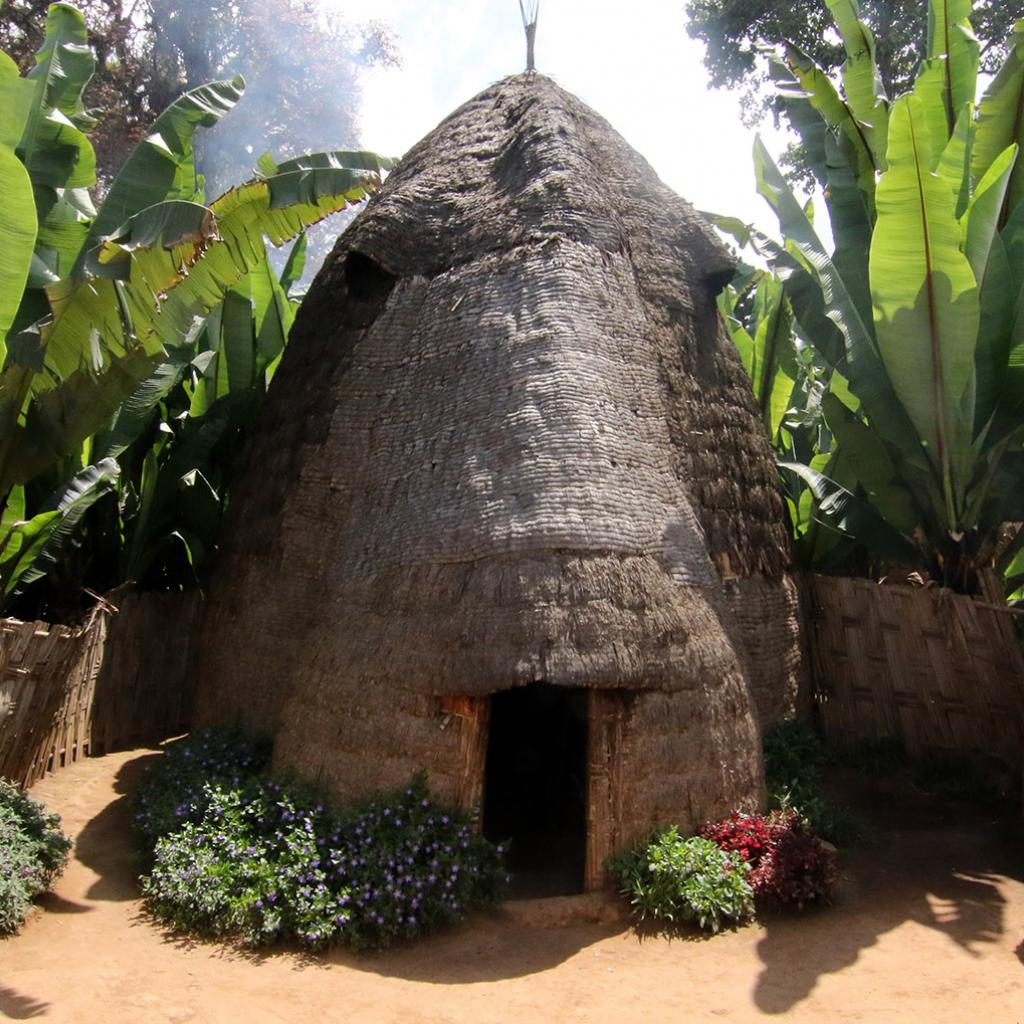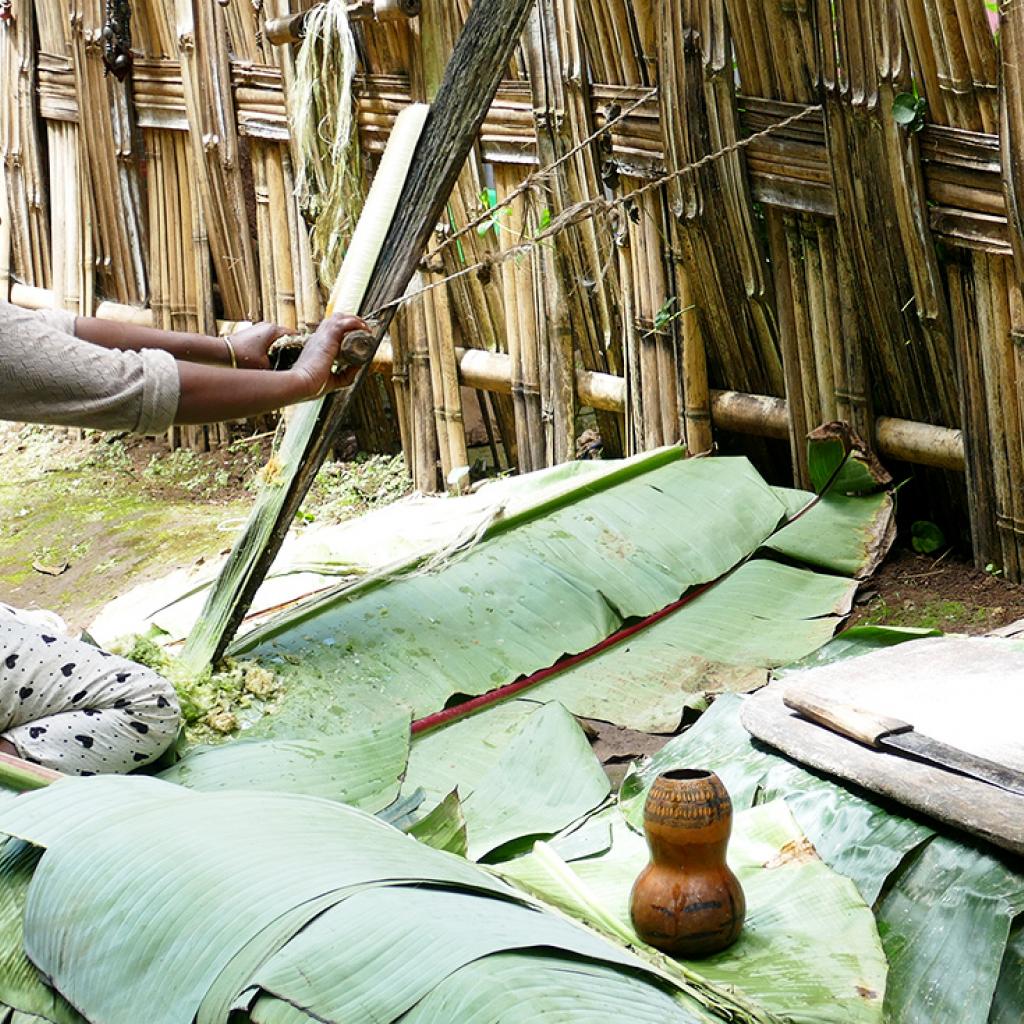The Enset is an indigenous plant of tropical Africa, its scientific name is Ensete ventricosum but it is known as Ethiopian banana or false banana, it is a plant always green, taller and thicker than the banana plant but its fruits are not edible, it blooms only once after which it dies.
Each plant takes four to five years to mature.
The false banana has a pseudo-stem that resembles a trunk but in reality is formed by the sheaths of the closely overlapping leaves, this part of the plant continues to grow in height and reaches its maximum when the inflorescence is born.
The sections of the swollen leaf sheaths, that grow under the ground, form the corms, these parts, together with the pseudo-stem, represent the edible part of the plant.
The enset represents a traditional staple food in the densely populated areas of the South and South-West Ethiopia and the Dorze are among the populations who practice an intense cultivation of these plants and use every part of them.
The false banana has several advantages, it requires little care, it resists drought, it can be collected at any time of the year and at any stage of its development, even when it is not ripe; moreover for several years it has a higher yield than any other cereal, in addition the resulting pulp can be preserved for long periods.
Its large leaves collect rainwater favoring its spread to the soil and preventing erosion.
From the enset you get a pulp and a juice rich in energy that are used to prepare the traditional dishes of the Dorze.
The sheaths of the leaves are cut from the plant and subsequently scraped, with a tool made of bamboo, obtaining a fibrous pulp rich in starch, this pulp is pressed to remove the juice, called bulla, that is used to cook a dish similar to porridge.
Instead the pulp is placed in a pit in the ground to ferment, the men dig holes about 3 meters deep and 2 meters in diameter, fill the bottom with stones that are used for water drainage, the dough is covered with leaves of enset and pressed with other stones to favor the loss of liquids.
The underground fermentation lasts for a period ranging from 2 weeks to 18 months, the product that is obtained is called the kocho and is a kind of flour that is used to produce a flat bread similar to a piadina.
The collection of the leaves should take place near the appearance of the inflorescence if you want to produce the kocho, as the leaves must have a high starch content and this is more likely to happen when the plant has the inflorescence.
While if you want to cook amicho, a dish that requires fresh corms to be cooked like potatoes, they should be harvested at an early stage compared to the presence of the inflorescence.
After having extracted the pulp for the kocho, what remains of the sheaths of the leaves can supply good quality fibers to produce ropes, baskets, mats, carpets and bags.
In addition to food for people, the enset provides a valuable food for livestock, in times of drought the leaves, and sometimes even the corms, can be a valuable feed for animals that do not find enough food in the pastures.
Finally the enset leaves are used to make the roof of the huts, they are cut into strips that are subsequently intertwined with one another.
Photogallery
